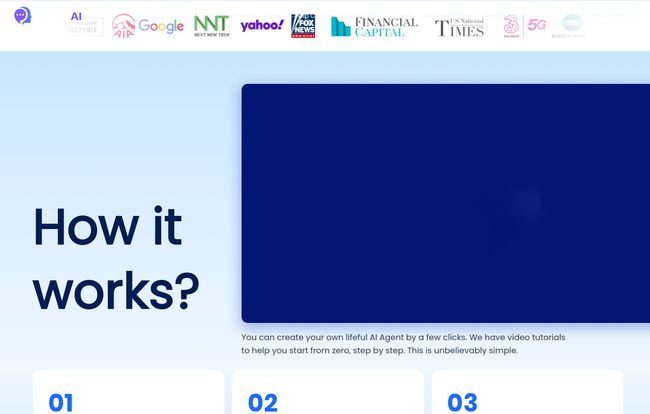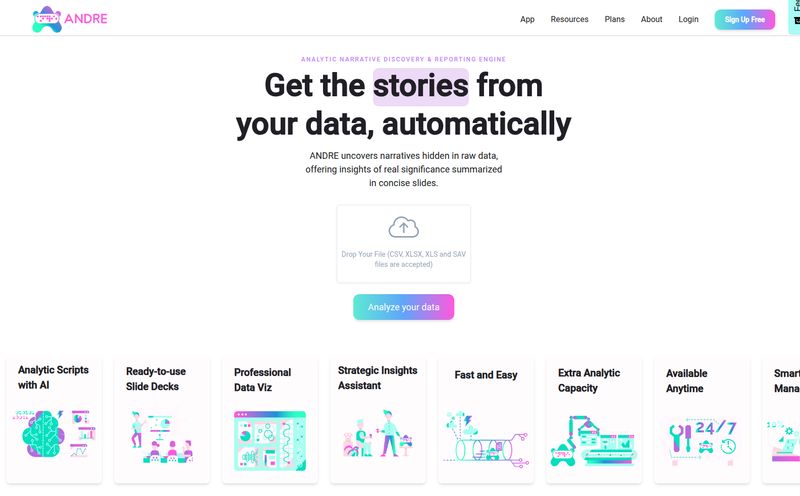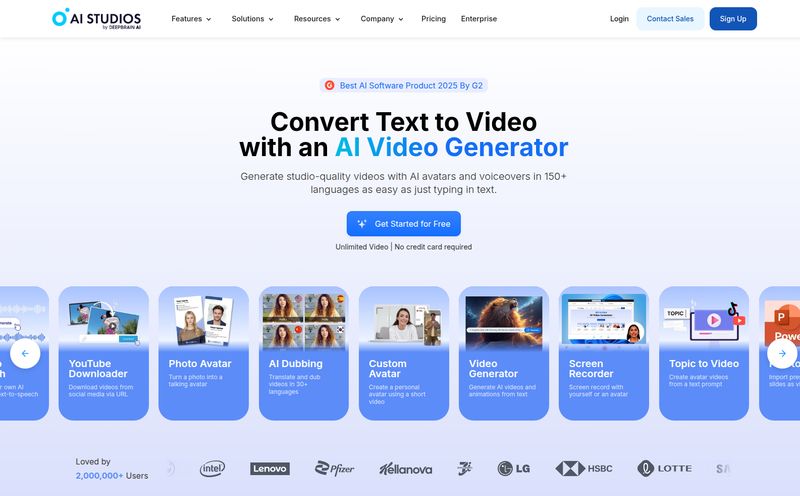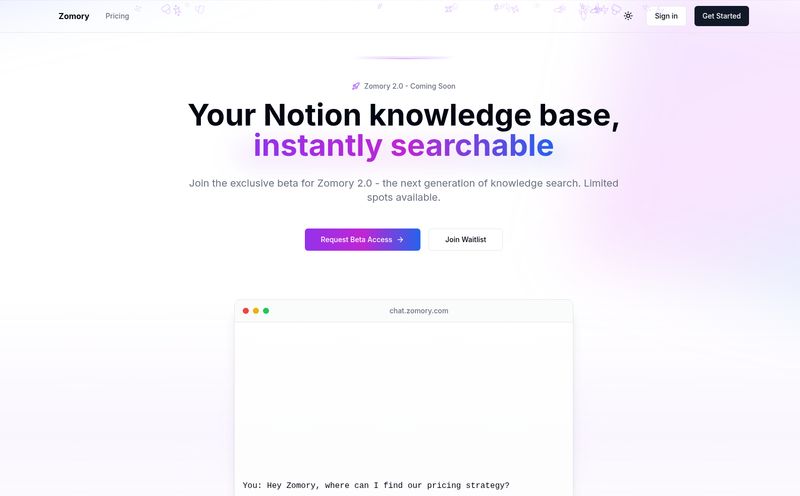We’ve all been there. You land on a website, you have a simple question, and you're greeted by a cheerful little pop-up in the corner. You type out your detailed query, hit enter, and wait with bated breath. The response? A link to a generic FAQ page that doesn't even come close to answering your question. It's the digital equivalent of being told, “please hold,” and then being hung up on. The frustration is real.
For years, we've been told that AI chatbots are the future of customer service. And while they've gotten better, they often still feel... robotic. Impersonal. Lacking that human touch we crave when we're genuinely stuck. I’ve been in the SEO and traffic generation world for a while, and I've seen countless tools promise to revolutionize user engagement. Most are just a new coat of paint on the same old chassis. So when I came across Kimiyi AI and its promise of a “digital human platform,” my curiosity was piqued. Is this actually different, or just another cog in the machine?
So, What on Earth is Kimiyi AI?
In a nutshell, Kimiyi AI isn't just a chatbot. It's a platform that lets you create a lifelike, interactive avatar—a digital person—to act as the face of your customer support, sales team, or even internal training. Instead of a faceless text box, your website visitors can interact with a responsive, talking avatar. It’s like cloning your best employee—the one who’s always patient, knows everything, and somehow never needs a coffee break—and putting them on your website 24/7.
The process they lay out seems deceptively simple. It’s a three-step dance:
- Create an AI Agent: You pick an avatar from their library that fits your brand's vibe.
- Feed it Knowledge: This is the magic part. You upload your own documents, website URLs, product manuals, internal wikis—whatever information you want it to know.
- Preview and Go Live: You check to make sure your new digital employee isn't saying anything bonkers, and then you generate the code to embed it on your site.
It’s this “bring your own brain” approach that really sets it apart. The AI isn't pulling from a generic, internet-wide dataset. It’s pulling from your data. Your voice. Your company knowledge. It's a really interesting idea, and one that feels both futuristic and somehow overdue.

Visit Kimiyi AI
Putting a Face to the Code: Why the Avatar Matters
Some might argue that the avatar is just window dressing. A gimmick. I disagree. In a world of increasing automation, a human face (even a digital one) can be a powerful tool for building trust. Think about it. We're biologically wired to respond to faces. It fosters a connection that plain text simply can't replicate. Choosing an avatar that aligns with your brand isn't just a fun customization feature; it’s a strategic choice about how you want your customers to feel when they interact with you online.
It’s about moving from a transactional experience to a relational one. And in 2024, building those relationships is everything.
Where Kimiyi AI Really Shines
Okay, so the concept is cool. But what about the practical benefits? After digging through their features, a few things stand out. The 24/7 availability is the most obvious win. Your business can be helping customers, answering sales questions, and guiding users in different time zones while you’re fast asleep. That’s a massive operational advantage, especially for small teams.
But for a data nerd like me, the real gold is the promise of Real-Time Analytics & Insights. I'm not just talking about counting the number of questions asked. I'm talking about understanding what people are asking. Are dozens of users getting stuck on the same step in your checkout process? Is a key feature of your product completely misunderstood? This is direct, unfiltered feedback from your user base. It's a roadmap for improving your products, services, and website content, handed to you on a silver platter. That's not just support; it's market research.
Let's Be Real: The Potential Hiccups
No tool is perfect, and it’s important to go in with eyes wide open. My SEO brain immediately flags a few potential bumps in the road. The biggest one is the principle of Garbage In, Garbage Out (GIGO). Kimiyi AI's intelligence is entirely dependent on the quality and comprehensiveness of the data you upload. If your internal documentation is a mess, or your product descriptions are vague, your digital human will be, well, an unhelpful digital human. It can't invent answers; it can only work with what you've given it. So, a successful implementation requires a bit of upfront house-cleaning of your own information.
There's also the question of nuance. While it's marketed as 'human-like', an AI is still an AI. Can it truly decipher a deeply complex, multi-part question from a frustrated customer? Can it pick up on sarcasm or subtle cues? Probably not, at least not with the sophistication of a seasoned human rep. For those really tricky edge cases, you'll still need a clear escalation path to a real person.
Who Is This Actually For?
I can see this being a game-changer for a few specific sectors. For an E-commerce store, imagine a friendly avatar popping up to help a customer find the right size or answer a question about shipping returns. That could be the difference between a sale and an abandoned cart. For a Hotel, a virtual concierge on the website answering questions about amenities, local attractions, and booking availability seems like a no-brainer. It elevates the pre-booking experience. And for a Museum or cultural institution? An interactive digital guide that brings exhibits to life online? That's just plain cool.
The platform isn't just for customer-facing roles, either. The idea of using it for a Corporate Trainer or an Office Assistant to answer common HR questions is pretty clever. It could free up a ton of internal resources.
The All-Important Question: What Does Kimiyi AI Cost?
Alright, let's talk money. Pricing can make or break a tool like this. Kimiyi AI uses a tiered subscription model, which seems pretty standard. Here's my quick take on the plans:
| Plan | Price (Monthly) | My Two Cents |
|---|---|---|
| Free | $0 | This is your 'kick the tires' plan. With only 10 questions a month, it's a demo, not a solution. Good for getting a feel for the interface. |
| Basic | $29/mo | The real entry point for a small business or solopreneur who's serious about trying this out. 500 questions is a decent starting volume. |
| Growth | $99/mo | This is clearly their sweet spot, the one they label 'Most Popular'. With 3 AI agents and 2,000 questions, it's built for a growing business that wants to deploy this across a few different areas (e.g., sales, support). |
| Executive | $299/mo | For established businesses with significant traffic. The big prize here is the API access, which lets your developers integrate Kimiyi in much more custom ways. |
| Nita | Custom | The enterprise-level 'call us' plan. This is for major brands that need custom branding, unlimited everything, and probably a dedicated account manager. |
The pricing feels reasonable and scalable. You can start small and grow into the platform as your needs and traffic increase, which is a model I always appreciate.
Kimiyi AI vs. Traditional Chatbots: Is It Worth the Upgrade?
So, we come back to the original question. Is this just a fancy chatbot? I dont think so. The difference is psychological. I remember reading a piece on the Nielsen Norman Group blog about user trust and interface design, and while they weren't talking about this exact tech, the principle holds: human-centric design builds trust. A traditional chatbot is a utility; a digital human is an experience.
It's an investment in your brand's personality. It signals that you're forward-thinking and that you care about providing a more engaging, less robotic interaction. For businesses where brand identity and customer experience are paramount, I think the jump from a simple text box to an interactive avatar could have a tangible impact on conversion rates and customer loyalty.
In the end, Kimiyi AI feels like a solid step in the right direction. It's not sentient AI from a sci-fi movie, but it is a powerful, accessible, and surprisingly user-friendly platform that bridges the gap between cold automation and personal connection. It won't solve every problem, and it requires some thoughtful setup, but for the right business, it could be less of a tool and more of a new team member. And one that, thankfully, will never steal your lunch from the office fridge.
Frequently Asked Questions about Kimiyi AI
- Is Kimiyi AI difficult to set up?
- Based on their materials, the initial setup is a straightforward three-step process. The main effort isn't technical; it's organizational—gathering and uploading high-quality documents to train your AI properly.
- Can I customize the avatar to match my brand?
- While the standard plans offer a selection of pre-made avatars, the high-end "Nita" plan mentions custom branding, which almost certainly includes creating or customizing an avatar to perfectly match your brand's look and feel.
- What kind of documents can I upload to train the AI?
- The platform allows you to upload various documents and even just provide URLs to existing web pages. This could include PDFs of product manuals, Word docs of company policies, or links to your online knowledge base.
- Does Kimiyi AI support multiple languages?
- The information provided doesn't specify, but given the global nature of online business, multi-language support is a common feature in modern AI platforms. It would be best to confirm this with their sales or support team based on the languages you need.
- Is the Free plan good enough to use for my business?
- In my professional opinion, the Free plan is strictly for evaluation. With a cap of 10 questions per month, it’s designed to let you see how the platform works, not to provide any meaningful level of customer support.
Reference and Sources
- Kimiyi AI Official Website
- Kimiyi AI Pricing Information
- Nielsen Norman Group - User Experience Research & Articles



